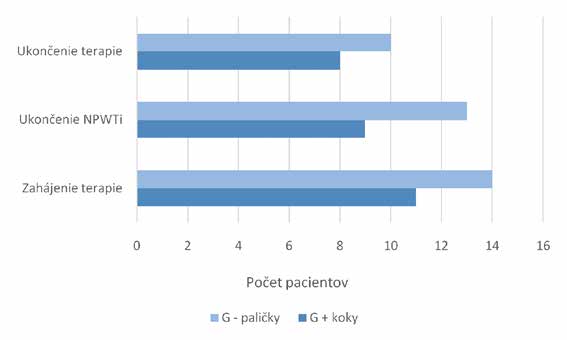Abstract
Introduction: Negative pressure wound therapy is a healing modality utilizing continuous or intermittently applied vacuum to the wound bed. Nowadays is available a vacuum system supported by an automated instillation with volumetric control. It`s main therapeutic benefit is the dilution of the exudate, which reduces the viscosity and secures the «delicate» necrectomy.
Method: Presentation of the temporary results of a prospective randomized study comparing the effectiveness of both therapeutic techniques. Entirely 41 patients were enrolled in the study from November 2016 to September 2018. The primary goal of the project is to compare the length of therapy, the number of surgical debridements and evaluation the financial costs. Secondary targets are observed changes in biological load and bacterial spectrum.
Results: The duration of the therapy was 2 days shorter in the experimental group compared to the control sample. However, the average number of applications was higher. Defects with the instillation system were characterized by a shorter cleaning phase (p=0.057). The secondary suture was reached in the experimental group at 84.2% and in the control group at 72.7%. The differences in these parameters were not statistically significant. Fascial disruption was observed in the trial group in 2 patients. The financial costs of the material used was significantly higher in patients with irrigation system (p<0.001). However, the total hospitalization costs did not differ statistically (p=0.097). There were no significant changes in the bacterial spectrum observed during therapy. There was a significant reduction in the bacterial burden during therapy in the experimental group (p= 0,035).
Conclusion: Vacuum system supported by automated instillation is an effective method, accelerating cleaning phase of the wound healing. A potential risk could be the disruption of the fascia during instillation of the solution. However, the results of our work are not definitive and a larger group of patients is needed for valid conclusions.

